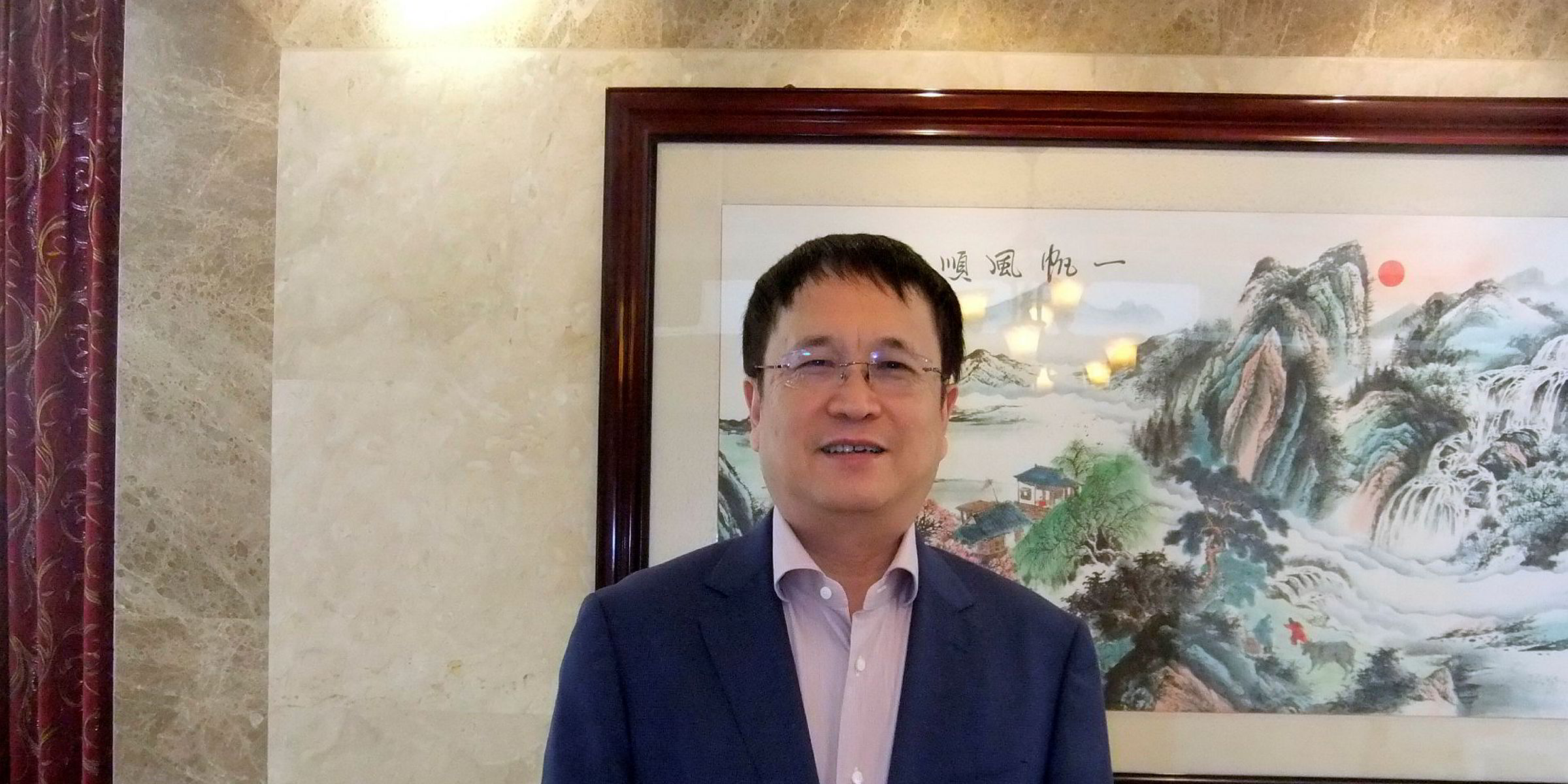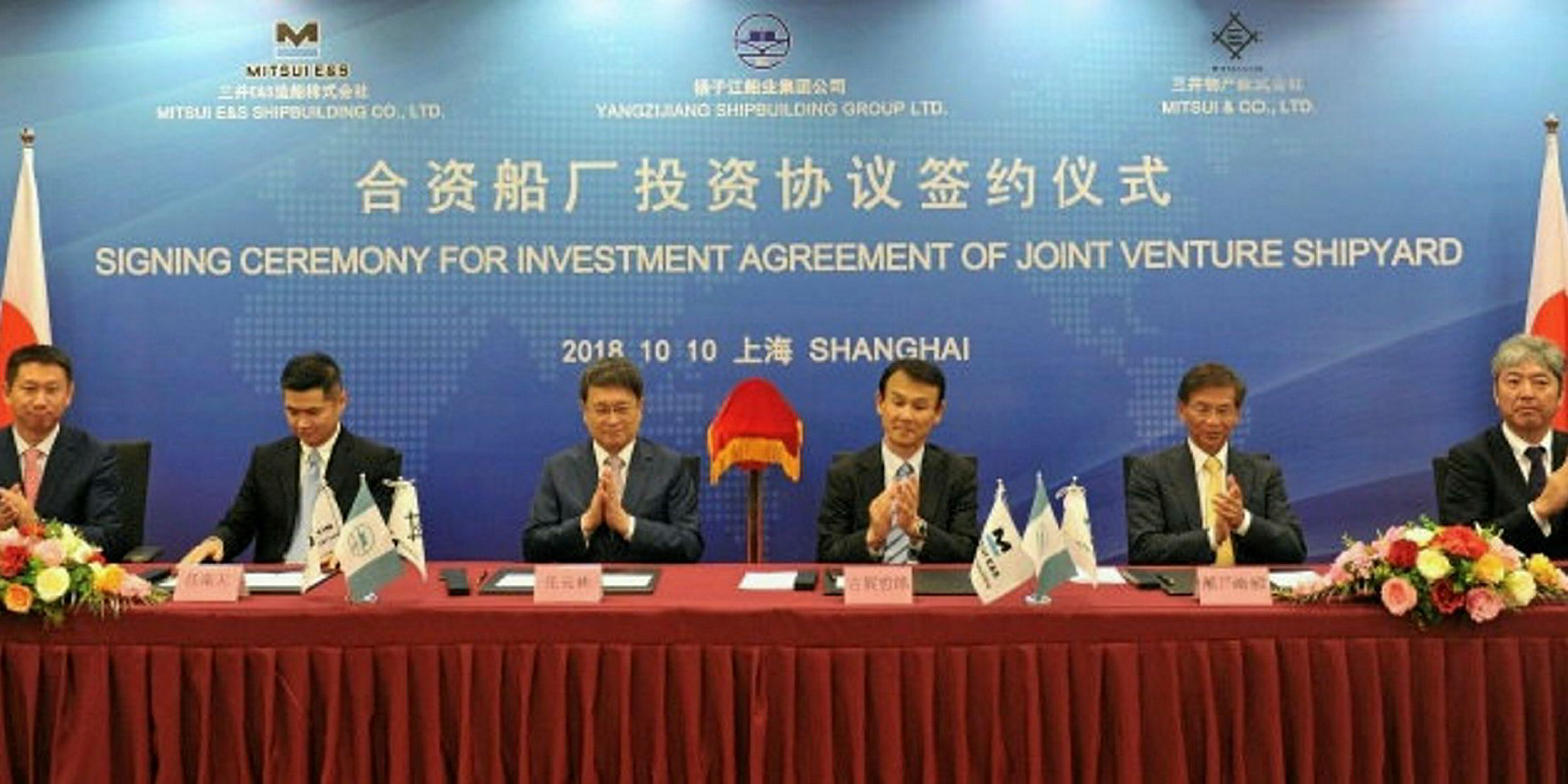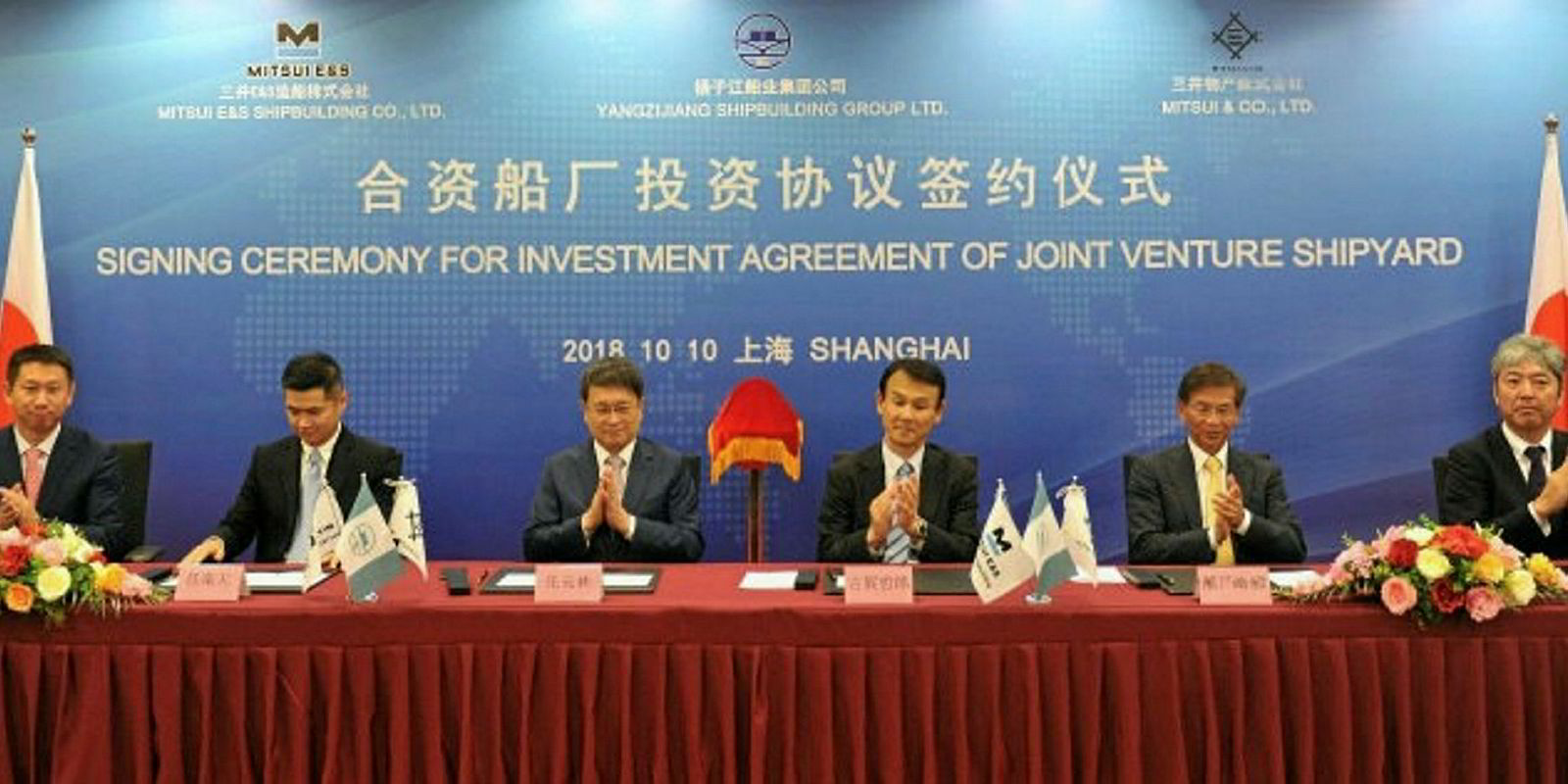A partnership between Japanese yard Mitsui Engineering & Shipbuilding (Mitsui E&S), trading house Mitsui & Co and China’s Yangzijiang Shipbuilding has the potential to create an Asian shipbuilding powerhouse that has got rivals worried.
The deal involves the Japanese companies renting Yangzijiang’s Taicang Shipyard for 20 years from next April.
The facility, which has been used mainly for building offshore structures and outfitting, does not have a dry dock but Mitsui E&S confirmed that the partners plan to build one. It has not been decided yet when construction will begin.
The joint venture said it is not focusing on a specific ship type, but it is understood it will begin by building bulkers.
The partners are targeting annual sales of ¥80bn ($713m) at the facility within five years, with an ambition eventually to break into the tanker and LNG markets.
Access to advanced technology
Yangzijiang executive chairman Ren Yuanlin said Japanese technology and marketing would help his company develop. He told TradeWinds: “We will follow what the market wants. If we just rely on ourself, it will be difficult to make progress. But by cooperating with the Japanese we will have access to their advanced shipbuilding technology.”
Yangzijiang has China’s largest orderbook but rivals point out that Japanese technology can improve its productivity. The Mitsui brand name and quality control will also help raise its reputation and earn a premium for its output.
However, in Japan there is concern that Mitsui E&S is the latest yard to “break ranks” and seek an alliance with cheaper Chinese partners as a survival strategy rather than work with domestic yards.
Local shipbuilders and brokers are taking the partnership as another sign that Japanese yards are no longer competitive.

Cost competition concerns
One Japanese yard representative told TradeWinds: “We see a trend where we [the Japanese] design the ships and the Chinese build them. Tsuneishi and KHI [Kawasaki Heavy Industries] are already doing it this way.”
Two of Japan’s leading LNG shipbuilders, Mitsubishi Heavy Industries and Imabari Shipbuilding, will be concerned that Mitsui E&S might sell its technology to a cost-competitive rival.
However, it is understood that Mitsui E&S sees the partnership initially working on building small and medium-sized LNG carriers using technology from Germany’s TGE Marine Gas Engineering, which it acquired in 2015.
We see a trend where we [the Japanese] design the ships and the Chinese build them. Tsuneishi and KHI are already doing it this way
Rivals said they see the potential of the new partnership, but are not fearful of its emergence yet.
One South Korean shipbuilder told TradeWinds that Yangzijiang and South Korean yards currently work in different markets. “[Yangzijiang] specialises in containerships and bulk carriers. We believe the yard will greatly improve in these two sectors very quickly with help from the Japanese. [South] Korean shipyards are not into bulkers and prefer to build ultra-large containerships.”
The Koreans also expect it will take time for Yangzijiang to establish itself as an LNG shipbuilder. LNG vessel construction is complex and requires good infrastructure with a supply chain of equipment makers, which China does not have, and South Korean sources feel it will take China several years to establish those networks.
Cultural differences
One Chinese shipbuilder said cultural differences could also hamper progress at a time of political tension between Tokyo and Beijing.
“We’ll just have to see how this joint venture progresses. There are cultural differences between the two countries, and the mentality of the workforce and politics are different. The partners will have to learn to adapt to each other.”
Mitsui E&S signed a similar collaboration pact in May with Tsuneishi Shipbuilding, which remains intact following the formation of the Yangzijiang joint venture.






